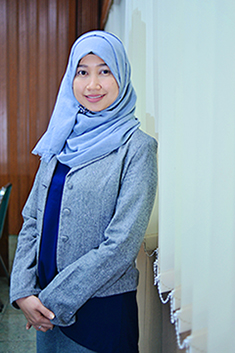Pharmacy Students’ Readiness for Offline Learning in The New Normal Transmission of COVID-19: A Cross-Sectional Study
Downloads
Background: Pharmacy students consist of undergraduate and professional pharmacy students. They are candidates for future pharmacist health workers who require practical experience. Offline learning with hands-on practice methods in health facilities supports their professional skills. Objective: This study aimed to determine pharmacy students' knowledge and attitude toward implementing offline learning methods during the new normal era. Methods: This study involved pharmacy students from Indonesia who were asked to participate in an e-questionnaire about the vaccination program, COVID-19 health protocols, pharmacist competence, and attitude toward implementing offline learning. The students' scores were based on their knowledge and attitude. Statistical analysis was performed to compare the scores between the two groups, and a correlation test was conducted to assess the relationship between the students' knowledge and attitudes. Results: A total of 652 pharmacy students were divided into two groups, undergraduate and professional pharmacy students, in a 3:1 ratio. About 74.6% of undergraduate students and 78.5% of professional pharmacy students had good and moderate knowledge. The level of knowledge was not different between the two groups (p=0.602; p>α). Professional pharmacy students were more ready to engage in offline learning compared to undergraduate students (p=0.001; p<α). However, there was a relatively low correlation between knowledge and attitudes, with r = 0.079 (p=0.043; p<α). Conclusion: Professional pharmacy students are more ready for offline learning methods than undergraduate students, particularly in hands-on field practice.
AlQhtani, A., AlSwedan, N., Almulhim, A., Aladwan, R., Alessa, Y., AlQhtani, K., Albogami, M., Altwairqi, K., Alotaibi, F., AlHadlaq, A., & Aldhafian, O. (2021). Online Versus Classroom Teaching for Medical Students During COVID-19: Measuring Effectiveness and Satisfaction. BMC Medical Education; 21; 1-7. doi: 10.1186/s12909-021-02888-1.
Danelich, I. M., Thomson, L., Alberto, J., Bonanni, S., Buckler, R., Foley, J., Phillips, S., Rall, B., Thoma, B., Merli, G., & Wordell, C. (2021). Adaptation of Clinical Pharmacy Services to Meet Patient Care Needs During the COVID-19 Pandemic. Journal of the American College of Clinical Pharmacy; 4; 364–371. doi: 10.1002/jac5.1392.
Efendi, F. & Kurniati, A. (2020). Human Resources for Health Country Profiles of Indonesia. Jakarta: Kementerian Kesehatan Republik Indonesia.
Engle, J. P., Burke, J. M., Ashjian, E. J., Avery, L., Borchert, J. S., Faro, S. J. E., Harris, C. S., Herink, M. C., Jain, B., MacLaughlin, E. J., Martello, J. L., Moore, K., Rogers, E., Smith, W. J., & Stranges, P. M. (2020). ACCP Clinical Pharmacist Competencies: Advocating Alignment Between Student, Resident, and Practitioner Competencies. Journal of the American College of Clinical Pharmacy; 3; 124–132. doi: 10.1002/jac5.1200.
FIP. (2020). FIP Global Competency Framework: Supporting the Development of Foundation and Early Career Pharmacist. Hague: International Pharmaceutical Federation.
Goff, D. A., Ashiru-Oredope, D., Cairns, K. A., Eljaaly, K., Gauthier, T. P., Langford, B. J., Mahmoud, S. F., Messina, A. P., Michael, U. C., Saad, T., & Schellack, N. (2020). Global Contributions of Pharmacists During the COVID-19 Pandemic. Journal of the American College of Clinical Pharmacy; 3; 1480–1492. doi: 10.1002/jac5.1329.
Kemendikbud RI. (2022). Surat Edaran No.3 Tahun 2022 Tentang Penyelenggaraan Pembelajaran di Perguruan Tinggi di Masa Pandemi CORONAVIRUS DISEASE 2019 (COVID-19) Tahun Akademik 2022/2023. Jakarta: Kementerian Pendidikan, Kebudayaan, Riset, dan Teknologi.
Mohamed Ibrahim, O., Ibrahim, R. M., Abdel-Qader, D. H., Al Meslamani, A. Z., & Al Mazrouei, N. (2021). Evaluation of Telepharmacy Services in Light of COVID-19. Telemedicine and E-Health; 27; 649–656. doi: 10.1089/tmj.2020.0283.
Mohamed, M. H. N., Mak, V., Sumalatha, G., Nugroho, A. E., Hertiani, T., Zulkefeli, M., Dorjbali, E., Dashbaljir, S., Faller, E. M., Benosa, C. A. C., & Zaini, S. (2020). Pharmacy Education During and Beyond COVID-19 in Six Asia-Pacific Countries: Changes, Challenges, and Experiences. Pharmacy Education; 20; 183–195. doi: 10.46542/pe.2020.202.183195.
Safwan, J., Cherfan, M., Dabbous, M., Hammoudi, D., Akiki, Z., Saade, F., Akel, M., Younes, S., Rahal, M., Raad, E. B., & Sakr, F. (2022). Faculty Perceptions on Online Education in a School of Pharmacy During the COVID-19 Pandemic. Pharmacy Education; 22; 450–457. doi: 10.46542/pe.2022.221.450457.
SKB. (2020). Surat Keputusan Bersama Menteri Pendidikan dan Kebudayaan, Menteri Agama, Menteri Kesehatan, dan Menteri Dalam Negeri Republik Indonesia No.03/KB/2020, No.612 Tahun 2020, No.HK.01.08/Menkes/502/2020, No.119/4536/SJ Tentang Perubahan Atas Keputusan Bersama Menteri Pendidikan dan Kebudayaan, Menteri Agama, Menteri Kesehatan, dan Menteri Dalam Negeri No.01/KB/2020, No.516 Tahun 2020, No.HK.03.01/Menkes/363/2020, No.440-882 Tahun 2020 Tentang Panduan Penyelenggaraan Pembelajaran pada Tahun Ajaran 2020/2021 dan Tahun Akademik 2020/2021 di Masa Pandemi CORONAVIRUS DISEASE-19 (COVID-19). Jakarta: Kementerian Pendidikan, Kebudayaan, Riset, dan Teknologi, Kementerian Agama, Kementerian Kesehatan, dan Kementerian Dalam Negeri Republik Indonesia.
Sutini, T., Apriliawati, A., Astuti, M. A., Wulandari, I. T., & Santi, R. T. (2022). Offline Learning Readiness During COVID-19 Pandemic: Indonesian' Parent Knowledge, Belief, and Attitude. Open Access Macedonian Journal of Medical Sciences; 10; 254–258. doi: 10.3889/oamjms.2022.8284.
Turana, Y., Primatanti, P. A., Sukarya, W. S., Wiyanto, M., Duarsa, A. B. S., Wratsangka, R., Adriani, D., Sasmita, P. K., Budiyanti, E., A., … Kurniawan, F. (2022). Impact on Medical Education and the Medical Student’s Attitude, Practice, Mental Health, After One Year of the COVID-19 Pandemic in Indonesia. Frontiers in Education; 7; 1-11. doi: 10.3389/feduc.2022.843998.
UNESCO. (2022). Education: From Disruption to Recovery. https://webarchive.unesco.org/web/20220629024039/https://en.unesco.org/covid19/educationresponse/. Accessed: 22 December 2022
WHO. (2019). Female Health Workers Drive Global Health. https://www.who.int/news-room/commentaries/detail/female-health-workers-drive-global-health. Accessed:25 December 2022.
Copyright (c) 2024 JURNAL FARMASI DAN ILMU KEFARMASIAN INDONESIA

This work is licensed under a Creative Commons Attribution-NonCommercial-ShareAlike 4.0 International License.
1. The copyright of this journal belongs to the Editorial Board and Journal Manager with the author's knowledge, while the moral right of the publication belong to the author.
2. The formal legal aspect of journal publication accessibility refers to the Creative Commons Attribution-Non-Commercial-Share Alike (CC BY-NC-SA), which implies that the publication can be used for non-commercial purposes in its original form.
3. Every publication (print/electronic) is open access for educational, research, and library purposes. In addition to the objectives mentioned above, the editorial board is not responsible for copyright infringement


.jpg)















